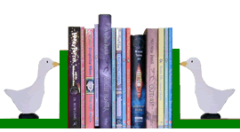Although some people manage to write novels without advance planning, that approach doesn’t work so well for non-fiction. You need to organise your thoughts before you start writing or you may end up with a jumble of facts that no one wants to read.
Step 1: Choose your subject
The usual advice to authors is “write what you know”, but I’ve successfully written books about topics I knew very little about initially. So I’m amending that advice to say “write what interests you”. Then your enthusiasm will show in your book and be passed on to your readers.
Once you have decided on a possible subject, do a search on Amazon or Google to find the books that will be competing with yours. How will yours be different and/or better? Can you find a different angle or aim at a different audience. Which brings us to…
Step 2 Choose your target audience
It’s sensible to write with a target reader in mind so think carefully about who your book is for.
- How old are they? A book for 8 year olds is going to be very different from one for adults.
- What do they already know about your subject? How much background knowledge can you assume they have? For instance, if you are writing about trains, can you safely assume that all your readers know how a steam engine works? If not, you’ll either need to explain that or write the book in such a way that their lack of knowledge doesn’t matter.
- What do they want to find out? Imagine you’re talking to your target reader and write down a list of the questions they might ask. Better still, do this exercise for real by asking people who you think might like your book.
If you want to appeal to more than one group of target readers, you’ll need to decide if their interests are sufficiently similar for one book to please them all. If not, it’s best to focus on one group and tackle the others with a later book. For example, if your subject is chess, you may want to start with a book for complete novices and then move on to one for experienced players.
Step 3 Develop the structure of the book
Now take the list you created in step 2 and use the answers to those questions and your own knowledge of the subject to write a list of the topics you’re going to put in the book. Don’t worry if you don’t have all the information you need yet – you can research later to fill the gaps.
Now experiment with different ways to order those topics and group them into sections until you’ve developed a provisional plan for your book. A chronological approach works well for many subjects, especially history books, but sometimes you may need to think of alternative approaches.
To show you how this works, let’s look at A Special Child in the Family, a book I wrote for parents of children with special needs. The wide range of information I wanted to include was very difficult to organise, but I eventually found that working through the life of the child from diagnosis to growing up and leaving home helped gave the book the shape it needed. By the time I settled down to do the actual writing, the plan for the book looked like this.
Part One: Early Days
Reactions to diagnosis
Finding out more
Part Two: The Professionals – who they are and how to work with them
Doctors
Health visitors and community nurses
Social workers
Therapists
Psychiatrists, psychologists and psychotherapists
Education specialists
Part Three: Coping
Facing the outside world
Finding the time and the money
Making life easier
Is hospital really necessary?
Going into hospital
Getting a break
When you can’t cope any more
Alternatives to care at home
Part Four: Family Matters
Taking the stress off your relationship
Brothers and sisters
Grandparents
Should we have another baby?
Part Five: Death and Dying
If your child might die
Talking to children about death
Death and bereavement
Part Six: Growing up
Ordinary school or special school
Getting the best from school
Helping your child face the future
Starting to write
The plan you’ve created is only a guide – it’s not set in stone. As you research in more depth and start the actual writing, you may find (as I usually do) that you need to change the order, put in an extra section or leave out another one completely. But the fact that the plan exists will help you keep your writing on track and give a structure to the book.
Use our search page to find the right editor, designer or illustrator to help produce your book.

Comments are closed.